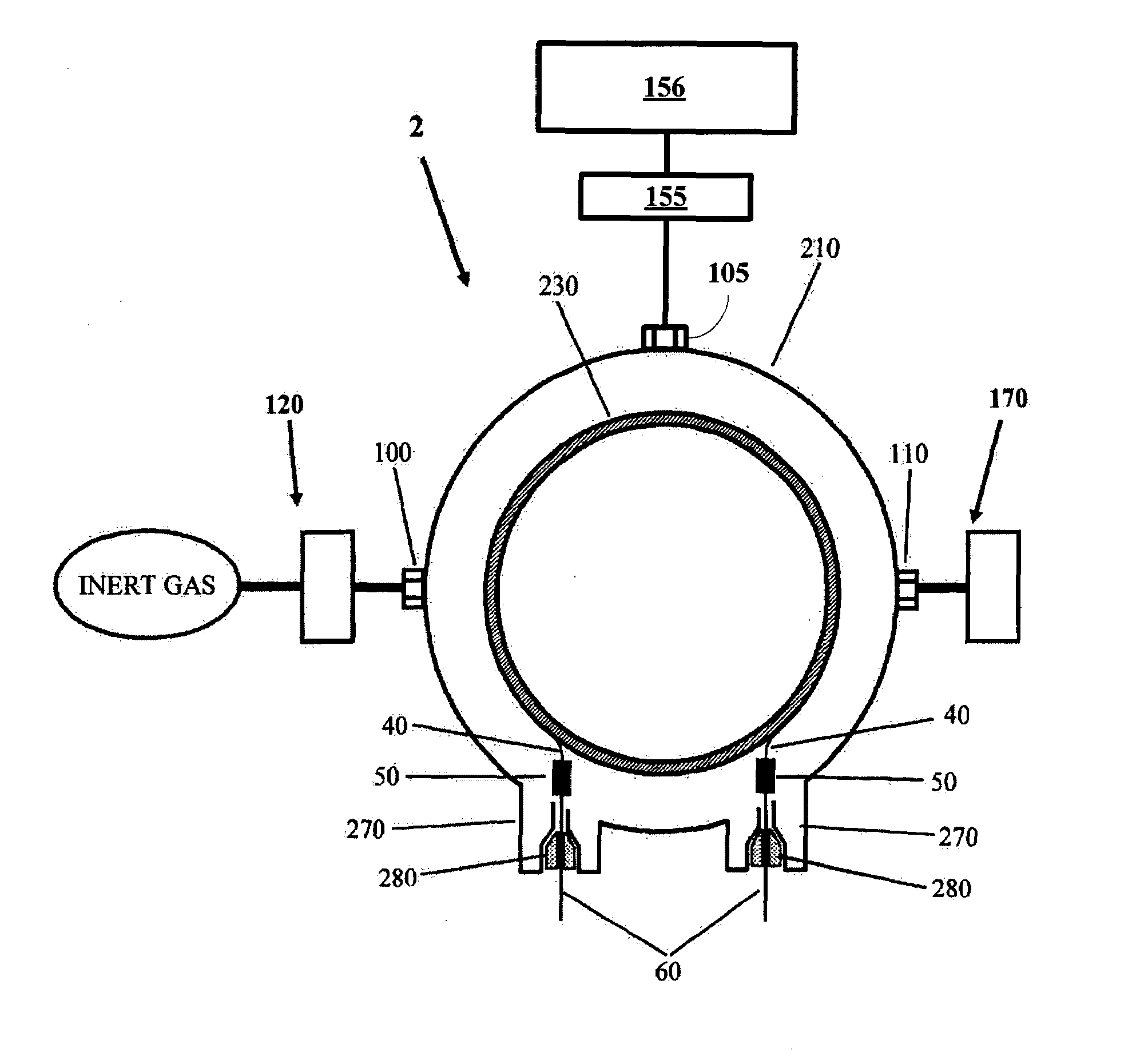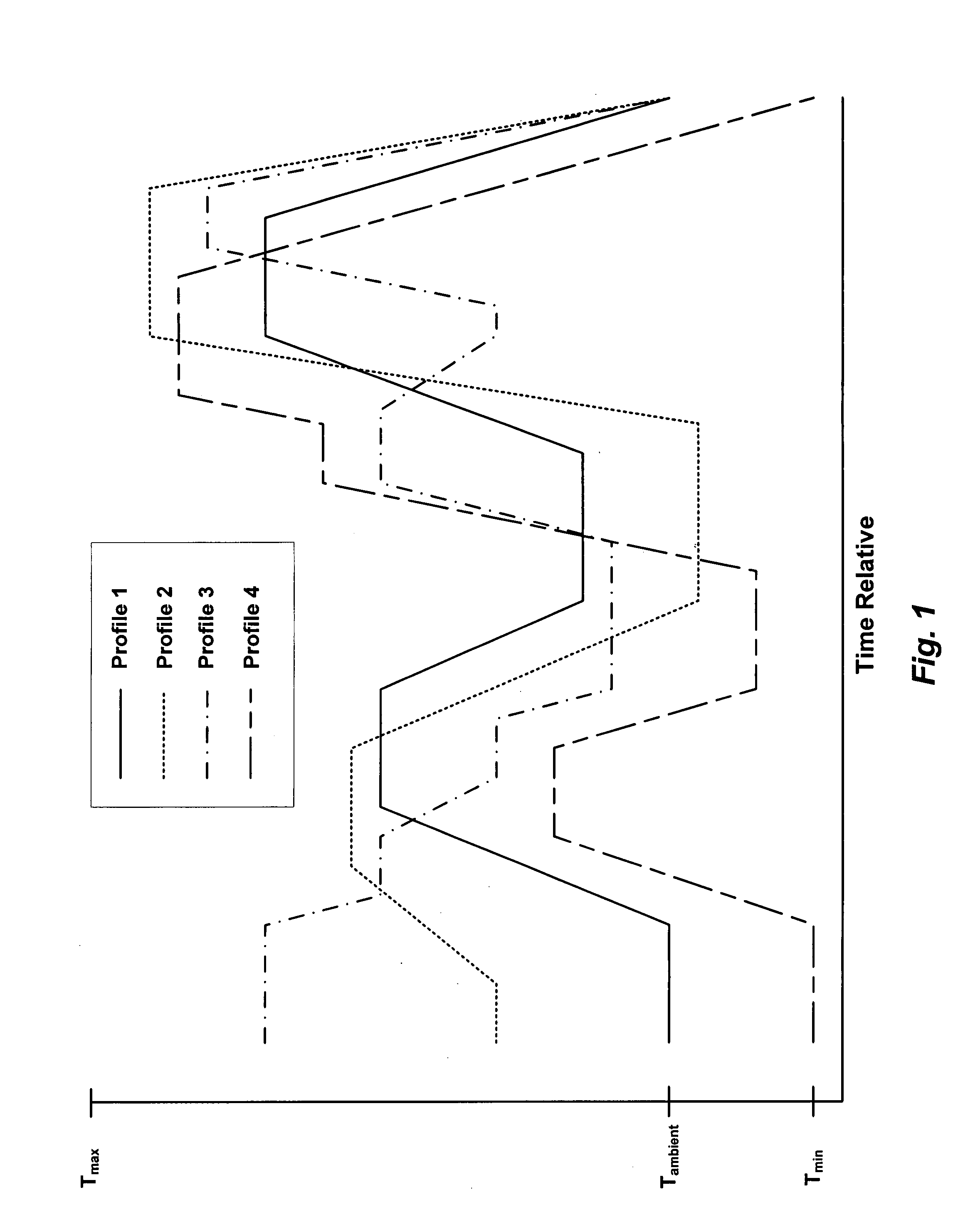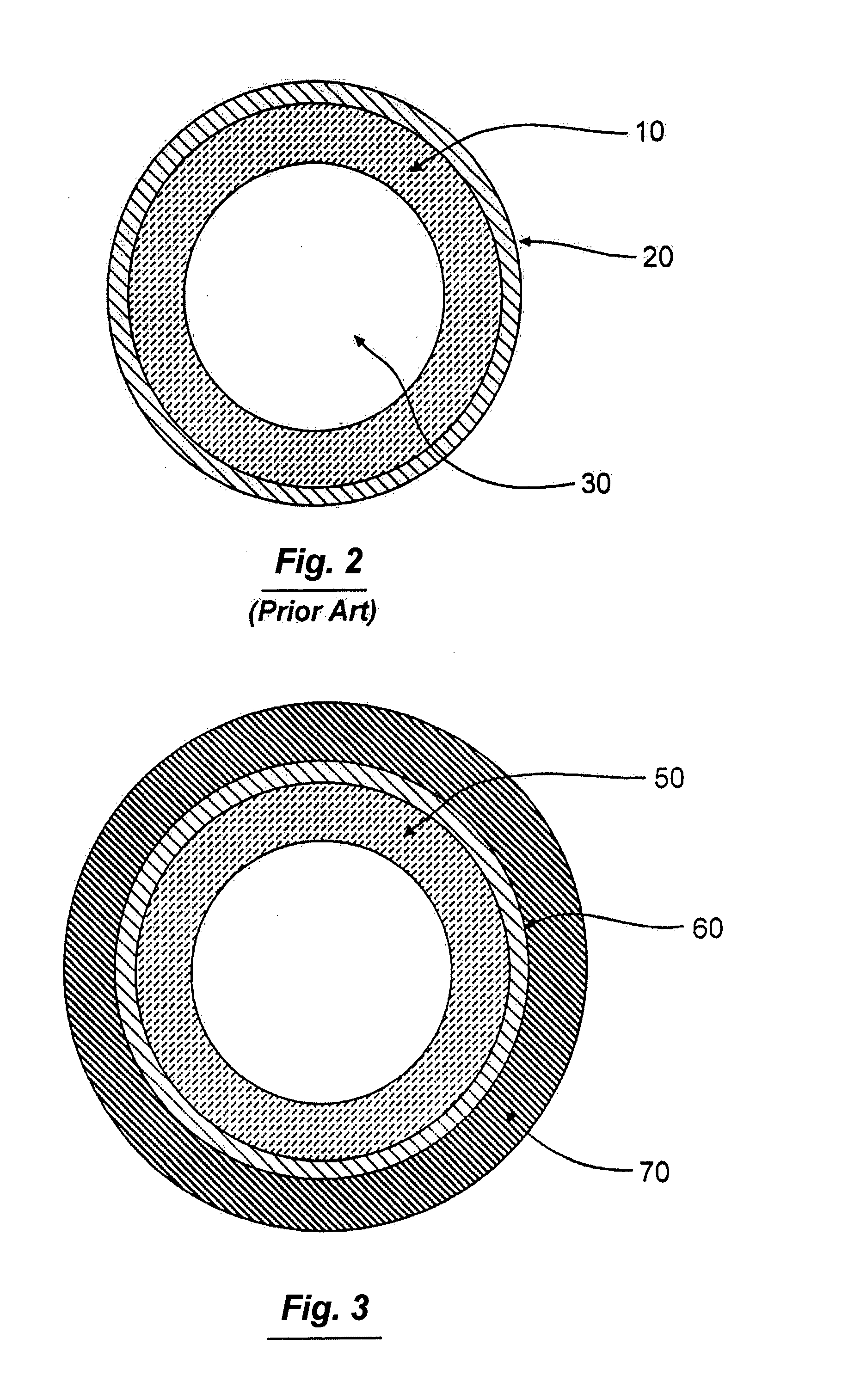Negative temperature profiling using microwave GC apparatus
a technology of negative temperature profiling and gc apparatus, which is applied in the direction of instruments, separation of dispersed particles, separation processes, etc., can solve the problems of reducing the throughput of the chromatograph, cooling time, and heating method of resistive elements, so as to achieve the desired cooling rate and improve separation efficiency
- Summary
- Abstract
- Description
- Claims
- Application Information
AI Technical Summary
Benefits of technology
Problems solved by technology
Method used
Image
Examples
Embodiment Construction
[0072]The inventor has found that superior GC separations can be achieved when samples includes closely clustered analytes or groups of analytes by including at least one negative temperature ramp in a GC separation profile. The negative temperature ramp can be anywhere in the profile and preferably is separated from other temperature ramps (positive or negative) by a temperature hold step. Such negative temperature ramps, steps or profiles can be used to allow lower boiling components to travel through the column while maintaining little or no separation of higher boiling components and to increase separation efficiency for components with close boiling points or groups of components with close boiling points.
[0073]The present invention broadly relates to a method for improving separation efficiencies including at least one negative temperature ramp in a gas chromatographic separation protocol by supplying a gaseous coolant to a microwave GC oven including a column capable of being...
PUM
 Login to View More
Login to View More Abstract
Description
Claims
Application Information
 Login to View More
Login to View More - R&D
- Intellectual Property
- Life Sciences
- Materials
- Tech Scout
- Unparalleled Data Quality
- Higher Quality Content
- 60% Fewer Hallucinations
Browse by: Latest US Patents, China's latest patents, Technical Efficacy Thesaurus, Application Domain, Technology Topic, Popular Technical Reports.
© 2025 PatSnap. All rights reserved.Legal|Privacy policy|Modern Slavery Act Transparency Statement|Sitemap|About US| Contact US: help@patsnap.com



